
7 Oldest Founded Small Towns to Visit in Texas
As Spanish missionaries and explorers established missions, forts, and villages, they laid the foundation for what would become some of the oldest towns in Texas. These towns witnessed the tumultuous events of the Revolutionary War, the War of Mexican Independence, and the formation of the Republic of Texas in 1836. By exploring these historic settlements, you can have a sneak peek into the stories and heritage that shaped Texas into the state it is today.
Join us on a journey through time as we explore seven of the oldest-founded small towns in Texas. From the cultural tapestry of Ysleta to the revolutionary echoes of Gonzales, each town offers a unique glimpse into the past. Discover the enduring legacy of these towns and uncover the tales that continue to define the Lone Star State.
Ysleta

Ysleta traces its origins back to 1680. Just east of El Paso, Ysleta was established by Spanish Conquistadors, Franciscan clerics, and Tigua Native Americans fleeing the Pueblo Revolt in New Mexico. Today, this historic town is part of the Ciudad Juárez community and continues to serve as a vibrant agricultural hub for the descendants of the Tigua people. The Ysleta del Sur Pueblo (YDSP), one of three federally recognized Native American Pueblos in Texas, plays a pivotal role in preserving the cultural heritage and history of the greater El Paso region. Visitors can explore the picturesque high-altitude basin of the Hueco Tanks, where the Tigua people conduct traditional prayers and gatherings in the water-holding depressions between the Franklin and Hueco Mountains.
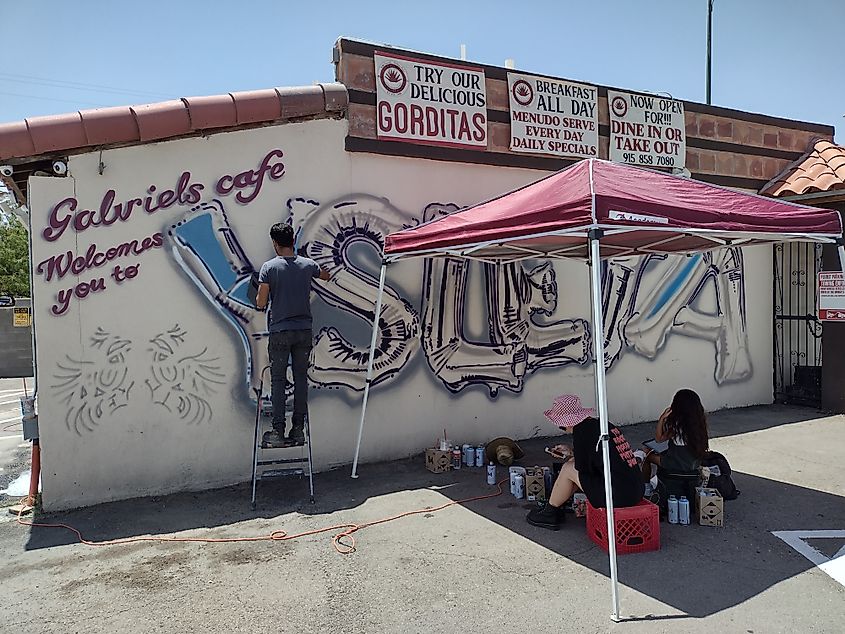
Ysleta's rich history is marked by its continuous occupation by the Tigua Indians since their resettlement following the 1680 Pueblo Revolt. The town became part of the United States in 1848 when the Rio Grande was established as the Mexican boundary. Although Ysleta was briefly declared a city in 1889, it was annexed by El Paso in 1955 despite local opposition. Recognition of the Tigua tribe by state and federal governments in 1967 solidified their presence in the oldest part of Ysleta, where they have since developed their reservation.
Nacogdoches

Nacogdoches boasts a rich history that dates back to 1779, though its roots stretch even further to around 800 A.D. with the Caddo Indians. Nestled in the Deep East region of Texas, this small city in Nacogdoches County has seen nine different flags throughout its storied past, reflecting its control by Spain, France, Mexico, and eventually the United States. The Spaniards first established a presence here in 1716 with a small mission, and later, Don Antonio Gil Y'Barbo led the town to be recognized as a pueblo. Visitors can immerse themselves in this deep historical tapestry by exploring the well-preserved historic district, featuring landmarks like the Stone Fort Museum and the Sterne-Hoya House Museum, which offer glimpses into 19th-century life.

Beyond its historical significance, Nacogdoches enchants visitors with its charming blend of antiquity and modernity. The historic old town is adorned with red-brick buildings and streets, Victorian mansions, and lush green trees, creating a picturesque setting. Known as the "Garden Capital of Texas," the town is interspersed with creeks and nature trails that were once Native American trade routes. Adding to its vibrant atmosphere, Nacogdoches is home to Stephen F. Austin State University, established in 1923, which contributes to the town's lively cultural and educational scene.
Goliad

Goliad holds a significant place in the state's rich history. Established in 1749 when Spanish missionaries relocated the Mission Espiritu Santo de Zuniga to the San Antonio River, Goliad was initially named "La Bahia" due to its proximity to Matagorda Bay. The town was renamed in 1829 in honor of Father Hidalgo, a key figure in the Mexican independence movement. Visitors today can explore the beautifully restored Spanish Colonial-era Mission of Nuestra Senora del Espiritu Santo de Zuniga at Goliad State Park, and the Presidio La Bahia, the birthplace of General Ignacio Zaragoza, offering a deep dive into the town’s storied past.
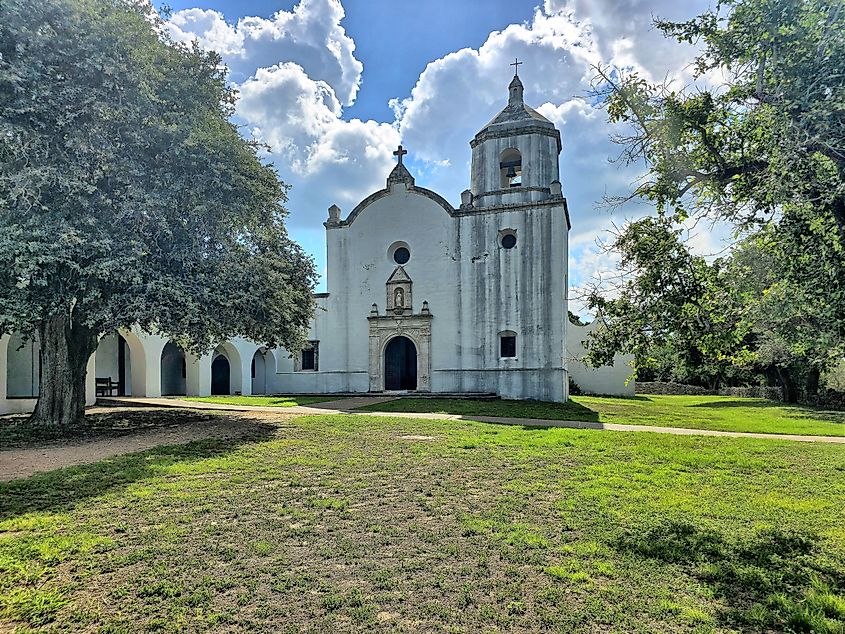
Goliad is also remembered for its pivotal role in the Texan War for Independence, particularly the tragic Goliad Massacre. At the Fannin Battleground State Historic Sites, visitors can reflect on the execution of Colonel James W. Fannin and his 342 men after the Battle of Coleta Creek. This event fueled the Texan cry "Remember Goliad!" during the decisive Battle of San Jacinto. Just 26 miles from Victoria, Goliad’s blend of historical landmarks and somber memorials provides a poignant and enriching experience for visitors, making it a compelling destination to explore Texas’s early history.
San Augustine
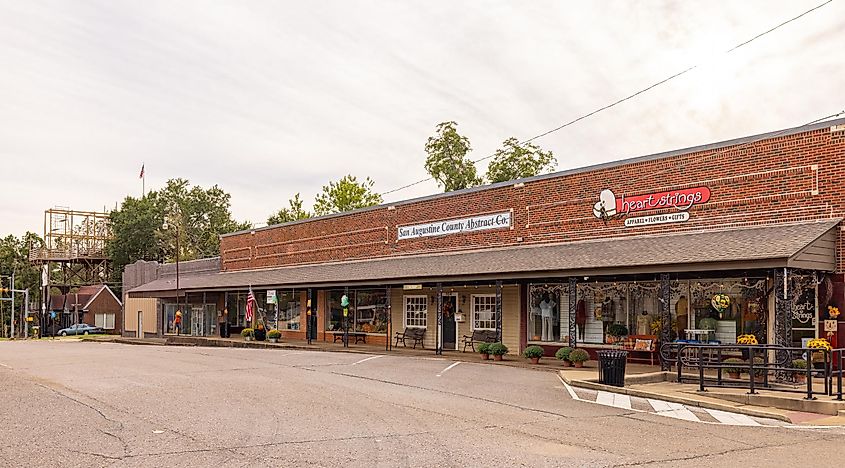
Located just 35 miles east of Nacogdoches, San Augustine's roots date back to the early 18th century when Spanish missionaries established the Mission Nuestra Señora de los Dolores de los Ais in 1717. Though the mission faced early challenges, it was re-established in 1721 and remained active until 1773. Today, visitors can explore the Mission Dolores State Historic Site, a testament to the town's early European influences. The town saw permanent settlement after 1779, with diverse populations, including Kickapoo, Cherokee, Delaware, and Shawnee tribes, contributing to its rich cultural fabric.

San Augustine, the county seat of San Augustine County, is steeped in historical significance. Established along El Camino Real de los Tejas, the “Royal Highway,” in 1834, the town quickly became a hub of trade and politics during the Texas Republic era. The town's historic charm is further highlighted by the San Augustine County Courthouse, the third courthouse serving the county since 1927. Visitors can immerse themselves in the town's storied past by visiting these landmarks and exploring the surrounding East Texas Timberlands.
Gonzales

Gonzales is famously known as the birthplace of the Texas Revolution, marked by the first cannon fire in 1835. Visitors can delve into this rich history at the Gonzales Memorial Museum, which houses the iconic cannon and tells the story of the Immortal 32, a group of brave volunteers from Gonzales who fought at the Alamo. For those seeking a deeper understanding of early Texan life, the Eggleston House, J.B. Wells House Museum, and Pioneer Village Living History Center offer immersive, self-guided tours that bring the 1800s to life.

The town's historical significance is further highlighted by over 100 historical markers scattered throughout Gonzales, each narrating key events such as the 1835 Attack at Sandies Water Hole and the Battle of Gonzales. These markers provide an informative and engaging way to explore the town's storied past. Located just 73 miles from San Antonio, Gonzales invites visitors to step back in time and experience the birthplace of Texas independence.
Presidio

Situated on the US-Mexico border near Ojinaga, Mexico, Presidio's origins date back to 1535 when Spanish explorer Álvar Núñez Cabeza de Vaca first named it La Junta De Las Cruces. However, its history stretches even further, with indigenous groups cultivating the land since 1500 B.C., thanks to its prime location at the confluence of the Rio Grande and Rio Conchos rivers. Officially established as Presidio in 1683, the town is home to some of the oldest continuously-cultivated farmlands in Texas.

Visitors to Presidio can explore numerous historical and natural attractions. The Fort Leaton State Historic Site, the largest fortified adobe structure in Texas, offers a glimpse into the area's rich military history. Nature enthusiasts can enjoy panoramic vistas and Texas' two tallest waterfalls at Big Bend Ranch State Park, while those interested in the supernatural might be intrigued by the mysterious lights of the Chinati Mountains. Additionally, the McDonald Observatory provides a stunning view of the uncontaminated night sky.
Refugio
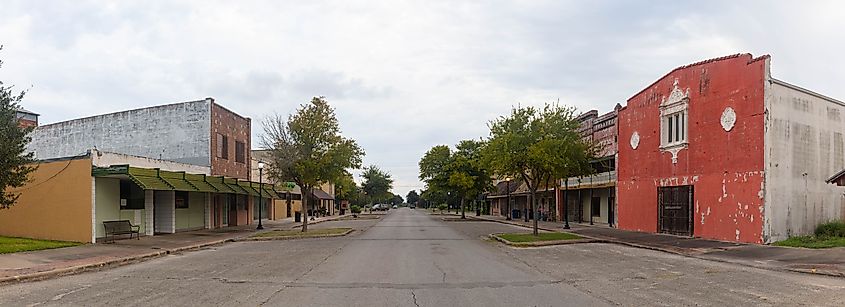
Refugio played a pivotal role in the Spanish colonization of Texas and was established in 1791 as Mission Nuestra Señora del Refugio by Spanish missionaries. The mission aimed to convert and educate the local Karankawa Indians, marking the beginning of European influence in the area. Today, visitors can explore the remnants of this historic mission, which stands as a testament to the town's early beginnings and cultural significance.
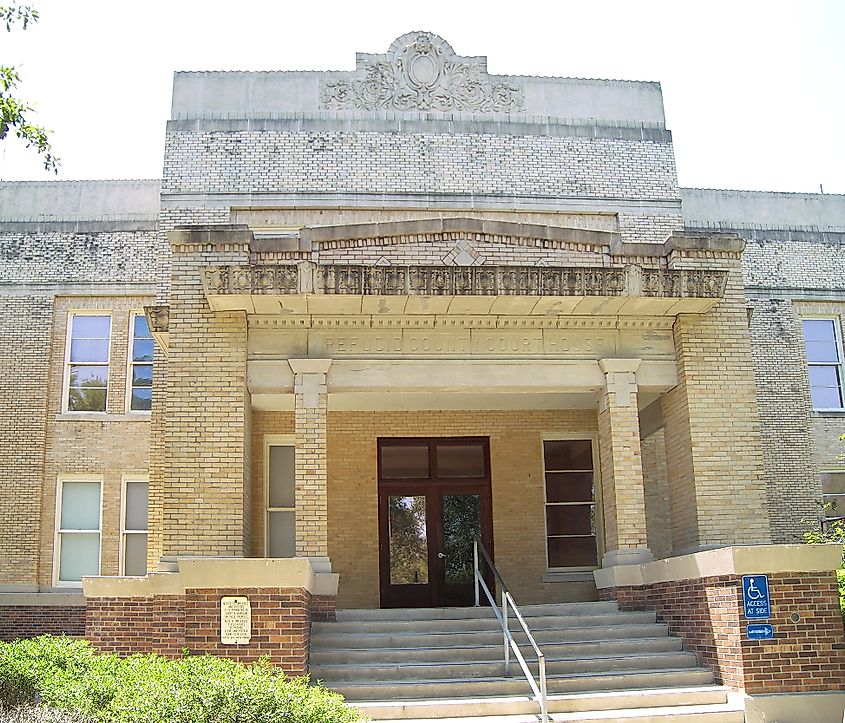
In addition to its historical roots, Refugio offers a charming small-town atmosphere with various attractions that make it worth a visit. The town is home to numerous historical markers and sites, such as the Refugio County Museum, where visitors can delve deeper into the region's storied past. Nature enthusiasts will appreciate the nearby Guadalupe River, which provides opportunities for fishing, kayaking, and bird-watching.
As we conclude our journey through some of Texas's oldest-founded small towns, it's evident that each one offers a unique and compelling narrative of the state's early history. From the resilient spirit of Ysleta to the revolutionary fervor of Gonzales, these towns provide an enriching glimpse into the past. Exploring their historic sites, museums, and scenic beauty not only educates but also inspires, making these destinations well worth a visit for any history enthusiast.











